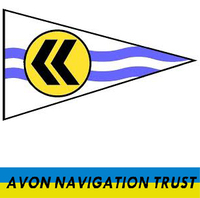


Local Sponsors
-
Avon Navigation Trust
Mill Wharf, Mill Lane Wyre Piddle WR10 2JF
The navigable river Avon runs from Alveston Weir above Stratford-upon Avon, for 47 miles, winding it's way through the Warwickshire, Worcestershire, and Gloucestershire countryside, down to Tewkesbury where it joins the river Severn.
-
The Severn Rivers Trust
Unit 3, Hope House Farm Barns, Hope House Lane, Martley. WR6 6QF
An independent environmental charity established to secure the preservation, protection, development and improvement of the rivers, streams, watercourses and water bodies in the Severn catchment.
More information
Many thanks to The Avon Navigation Trust for facilitating this camera's location and capitally funding its installation. Tewkesbury is a historic market town and civil parish located in the northern part of Gloucestershire, England. It gained prominence after the construction of Tewkesbury Abbey in the 12th century and played a significant role in the Wars of the Roses. Situated at the confluence of the River Severn and the River Avon, Tewkesbury became an important trading point, which continued to thrive with the establishment of railways, as well as the M5 and M50 motorways.The name 'Tewkesbury' is believed to have originated from Theoc, a Saxon who founded a hermitage in the area during the 7th century. In Old English, the town was called 'Theocsbury.' During the town's monastic period, there was an erroneous derivation of the name from 'Theotokos,' the Greek title for Mary, mother of God.The Battle of Tewkesbury, a significant event in the Wars of the Roses, took place on May 4, 1471. To this day, the town commemorates the battle with an annual medieval festival featuring historical re-enactments. Tewkesbury Abbey, built by the Normans, was consecrated in 1121. Originally part of a Benedictine monastery, the abbey was saved from the Dissolution of the Monasteries by King Henry VIII. The townspeople purchased it by paying the price of the lead on the roof, using it as their parish church. During the Dissolution, much of the monastery buildings and vineyards were destroyed, but the Abbey Mill and the Mill Avon, a channel believed to be built by the monks, still remain. The present weir, replacing two sluice gates from the 1930s, was constructed in the 1990s.The abbey is associated with the hermit Theoc, who is believed to have lived there. The Romanesque arch and stained glass window have been restored. Originally, the monastery was founded by the Despensers as a family mausoleum, and the Despenser and Neville tombs showcase fine examples of late medieval stonework on a small scale.The abbey's tower is considered to be one of the largest Norman towers still standing today, although Norwich Cathedral's tower is also a strong contender. The tower once had a wooden spire that may have brought its total height to around 260 feet, but it was blown off during a severe storm on Easter Monday in 1559. The current pinnacles and battlements were added in 1600 to give the tower a more finished appearance. The height to the top of the pinnacles is 148 feet (45 m). The abbey is believed to be the third-largest non-cathedral church in Britain (after Westminster Abbey and Beverley Minster). It measures 331 feet (101 m) from end to end, although the original Lady Chapel, which was destroyed during the Dissolution, would have made it 375 feet (114 m) long. The abbey currently serves as a parish church, hosting daily services, and is considered the second-largest parish church in England, following Beverley Minster.


